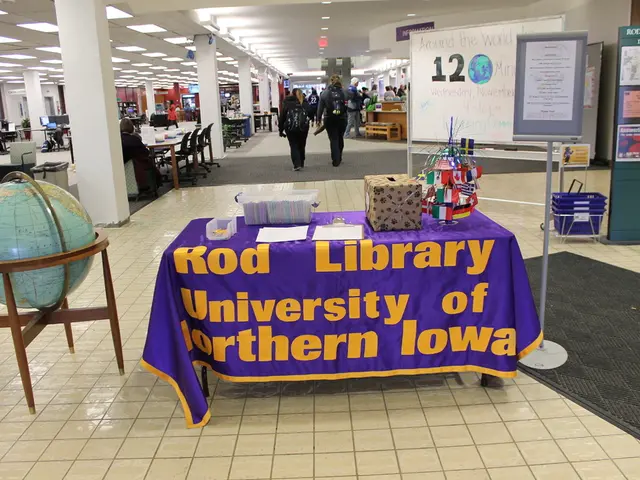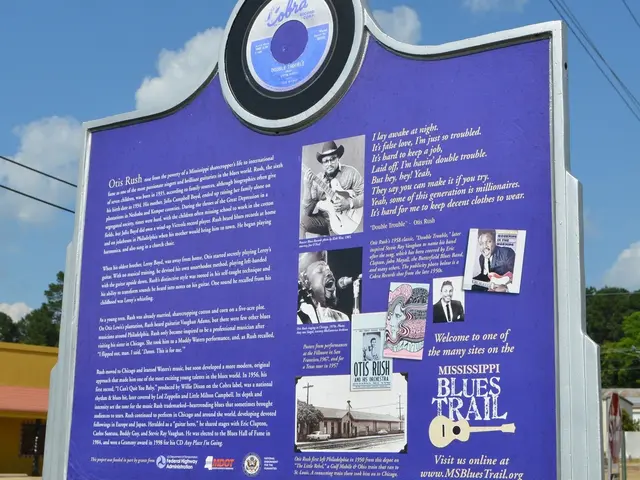AI Revolutionizing Media & Entertainment: The Boon of Language Translation in Local News Broadcasts
AI-Assisted Translation Trial Potentializes a Promising Future for All
In the ever-evolving world of media and entertainment, AI is making its mark with innovative applications popping up daily. One particular application that's caught my attention is AI-powered language translation.
For instance, AI is aiding broadcasters in making more efficient use of their spectrum by compressing content, identifying faces, objects, and text in video frames to enrich metadata. This tech-driven approach is transforming the industry, from streamlining sports productions to creating content recommendations for streaming services subscribers [1].
Recently, Sinclair, in collaboration with Deeptune, a leading generative AI language editing company, experimented with real-time English-to-Spanish translation of newscasts from four of their stations for YouTube distribution. The objective was initially to aid in disseminating severe weather warnings more effectively to Spanish-speaking audiences in South Florida. However, the team realized the potential to reach underserved audiences in their other markets [2].
With 68 million people across the U.S. who speak languages other than English at home, and a significant number of Spanish, Chinese, Tagalog, Vietnamese, and Arabic speakers, the opportunity for broadcasters to serve local viewers better, expand their audience, and generate more ad revenue is immense [3].
In a 3.0 future with support for personalized audio and multiple channels, a broadcaster in San Francisco could simulcast an AI-generated Chinese-language audio translation of its English-language newscasts, making news more accessible to a broader audience.
While the benefits are compelling (cost-effectiveness, speed, accessibility, scalability, and efficiency), challenges remain. AI models struggle with nuances and cultural sensitivities, technical limitations, digital divide and language support, quality and accuracy, and audience acceptance. Ensuring AI translations are accurate, reliable, sensitive, and well-received by audiences is crucial for its successful deployment [4][5].
From my perspective, marrying AI foreign language translation with local news broadcasts as 3.0 signals could benefit viewers, broadcasters, and society at large, fostering a more informed and engaged citizenry across different language groups.
- The application of AI in media and entertainment is gaining traction, with AI-powered language translation standing out as a significant innovation.
- Broadcasters are leveraging AI to optimize their spectrum, using it to compress content, identify objects and text in video frames, and enhance metadata production.
- Sinclair, working with Deeptune, demonstrated the potential of AI-powered language translation by broadcasting real-time English-to-Spanish news translations on YouTube.
- With 68 million non-English speakers in the U.S., broadcasters can increase their reach, grow their audience, and generate more ad revenue by catering to local viewers.
- Future broadcasts could simulcast in multiple languages, such as a San Francisco broadcaster providing Chinese-language audio translations for their English-language newscasts.
- Despite the benefits of AI language translation, challenges remain, including AI models' struggles with nuances, cultural sensitivities, technical limitations, audience acceptance, and ensuring accuracy and reliability.
- Integrating AI foreign language translation with local news broadcasts could lead to a more informed and engaged citizenry across various language groups, benefitting viewers, broadcasters, and society.
- At upcoming events like the NAB Show, discussions around AI technology, media, and entertainment will likely focus on the implications of AI language translation and its role in the future of broadcasting and streaming.








